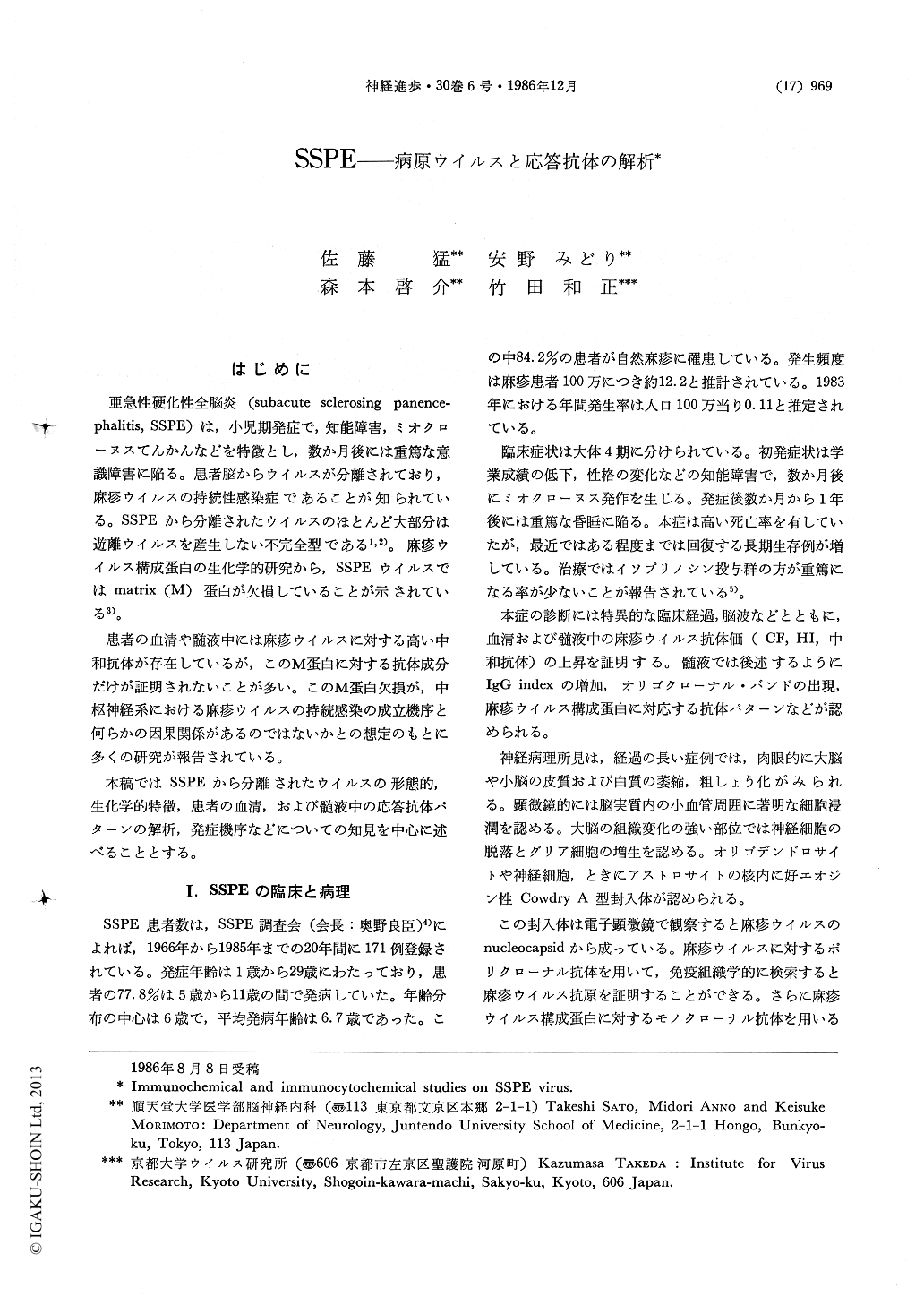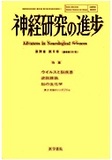Japanese
English
- 有料閲覧
- Abstract 文献概要
- 1ページ目 Look Inside
はじめに
亜急性硬化性全脳炎(subacute sclerosing panencephalitis,SSPE)は,小児期発症で,知能障害,ミオクローヌスてんかんなどを特徴とし,数か月後には重篤な意識障害に陥る。患者脳からウイルスが分離されており,麻疹ウイルスの持続性感染症であることが知られている。SSPEから分離されたウイルスのほとんど大部分は遊離ウイルスを産生しない不完全型である1,2)。麻疹ウイルス構成蛋白の生化学的研究から,SSPEウイルスではmatrix(M)蛋白が欠損していることが示されている3)。
患者の血清や髄液中には麻疹ウイルスに対する高い中和抗体が存在しているが,このM蛋白に対する抗体成分だけが証明されないことが多い。このM蛋白欠損が,中枢神経系における麻疹ウイルスの持続感染の成立機序と何らかの因果関係があるのではないかとの想定のもとに多くの研究が報告されている。
Subacute sclerosing panencephalitis (SSPE) is a slowly progressive and fatal disease of CNS caused by measles virus. We have succeeded in isolation of a measles virus and named it Niigata-1 strain in 1972, but this strain of SSPE virus failed to produce infectious free virus. Purified measles virus contains six major polypeptides. Recently, Hall (1979) reported that sera from SSPE patients presented relative lack of M (matrix) protein. It was suggested that lack of M-protein could be relevant to the persistent infection of measles virus in the CNS.
1. The purpose of the present study is to ascertain the ultrastructural localization of polypeptides of SSPE virus in the infected cells by monoclonal antibodies. Five monoclonal antibodies used in this study were specific against the hemagglutinin (HA), polymerase (P), nucleocapsid (NP), hemolysin-fusing factor (F) and matrix (M) proteins. Light and electron-microscopic studies on SSPE virus infected cells and brain tissues were carried out in indirect method using FITC or peroxidase labeled anti-IgG serum. The staining using monoclonal antibody against NP showed antigens in the nucleus and cytoplasm indicating the localization of nucleocapsids. Antibody against P demonstrated the fuzzy nucleocapsids in the cytoplasm. In spite of the absence of budding process in the cell membrane of SSPE virus infected cells, both HA and F were detected on the cell membrane. Lack of M-protein were revealed in cells infected with Niigata-1 strain. New born hamsters were inoculated intracerebrally with the measles vaccine virus and produced acute encephalitis in 4 to 8 days after inoculation. Perikaryon and dendrites were stained with five monoclonl antibodies. The nucleocapsids in the dendrites were stained with monoclonal antibody against NP. The paraffin embedded sections of brain from two patients with SSPE were examined by immunocytochemical method. Intranuclear inclusion bodies were stained with antibody to NP, and P,F, HA, and NP antigens were demonstrated in the cytoplasm.

Copyright © 1986, Igaku-Shoin Ltd. All rights reserved.


